Downtown Wooster in the 1800s
- Home
- History of Downtown Wooster
- Exhibits
- Downtown Wooster in the 1800s
revised by Glenna Van Dyke
Over time, the downtown area of Wooster has evolved greatly. In 1808, when the downtown area was first laid out, the land was divided into plots that each created a perfect square. These original streets can still be found today with some slight alterations. After the Civil War, the economy boomed, and the town grew significantly as the implementation of a railroad in 1852 also brought increased commerce and travel with it and as the end of the Civil War saw many young men entering the workforce. 1 During this period, cities all over America, including Wooster, expanded greatly. As the downtown area expanded, more businesses began to open to serve the needs of the city.
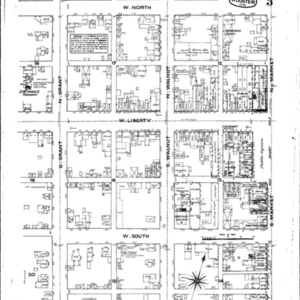
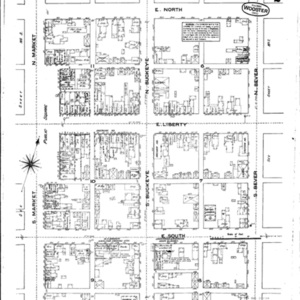
During this time, industry was big in Wooster with the Wooster Brush Company, Mcdonalds and Co., which made threshing machines, and harness and steam engine manufacturers as well. Wooster residents did the majority of their shopping downtown, as it had everything they needed to live. Craftsmen and women such as blacksmiths, marble cutters, masons, carpenters, jewelers, shoemakers, clothes makers could also be found selling their wares downtown.2 In addition to local businesses, there were also several hotels and lodgings in the area to support travelers and businessmen that came through Wooster. One such lodging would have been the Archer house, known for its fine food and reasonable prices.3 Downtown also had plenty of dry goods and general stores where Wooster residents bought their food. These industries and businesses made Downtown Wooster a bustling center for industry and commerce. 4
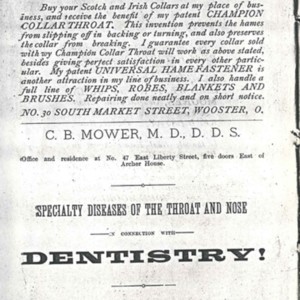
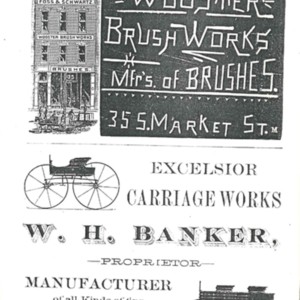
By the 1870s and 1880s, Wooster was no longer a solely agricultural area. The city housed the College of Wooster and other cultural centers such as their own opera house. The citizens of Wooster were no longer concerned with just subsistence, they now had the time and inclination to develop the arts. Wooster was also home to medical professionals who served the greater community, lawyers who worked in the courthouse, and University professors.
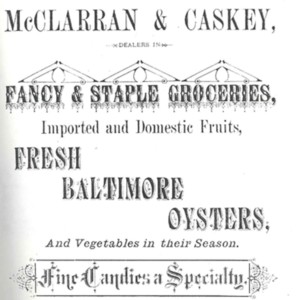
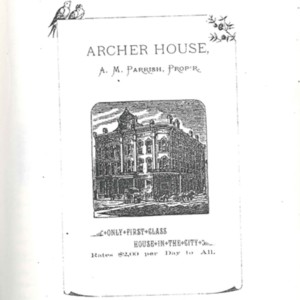
Before the existence of automobiles, the downtown area was a close-knit part of town where residents didn’t have to travel far to buy whatever they needed. Today, though the vital businesses are on the north end of town, Downtown continues to be a favorite spot and an important piece of Wooster’s history. The preservation of Downtown has helped to keep Wooster’s Midwest small town charm that so many are fond of.
Sources:
1- “Civil War and Industrial Expansion, 1860–1897 (Overview).” Gale Encyclopedia of U.S. Economic History. 1999. Encyclopedia.com. (June 9,2015).http://www.encyclopedia.com/doc/1G2-3406400169.html 2- Arnold Lewis, assisted by Beth Lewis, John Gates, and James Turner, Wooster in 1876 (Wooster Art Center Museum 1976), 43-50. Wooster City and Wayne County Business Directory 188-1885. D.W. Shives Geo. A. Shives and Chas. H. Merz. Compilers, Editors, and Publishers Printed at the Wayne County Harald 1884, R 917.71 W88 1884-1885. 3- Arnold Lewis, assisted by Beth Lewis, John Gates, and James Turner, Wooster in 1876 (Wooster Art Center Museum 1976), 39. 4- United States Census Bureau 1870 national census
How to cite this page:
MLA: “Downtown Wooster in the Late 1800s.” stories.woosterhistory.org, http://stories.woosterhistory.org/downtown-wooster-in-the-late-1800s/. Accessed [Today’s Date].
Chicago: “Downtown Wooster in the Late 1800s” stories.woosterhistory.org. http://stories.woosterhistory.org/downtown-wooster-in-the-late-1800s/ (accessed [Today’s Date]).
APA: (Year, Month Date). Downtown Wooster in the Late 1800s. stories.woosterhistory.org. http://stories.woosterhistory.org/downtown-wooster-in-the-late-1800s/

